Hanuman Dhara:
Wherever glory of Sri Rama is sung, Sri Hanuman is present there with [anandha] tears in his eyes. Chitrakoot is a place where many saints and sadhus always recite the glory of Sri Rama. This is how Sri Hanuman had come to visit Chitrakoot. Whenever Sri Rama katha is being recited here and when the scene of Sri Hanuman burning Lanka is narrated, Sri Hanuman’s tail will have a sensation. It is believed that to cool his tail Sri Hanuman dwelling in this place has a natural cool stream falling on his tail.

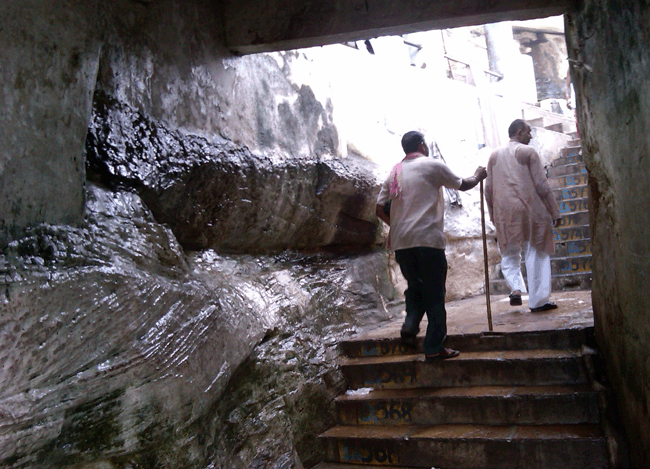
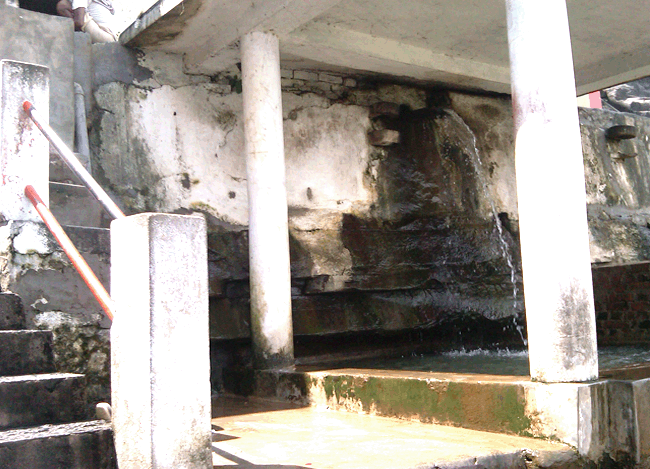
This is about 04 KM to the east of Ramghat at the beginning of the Vindhyas. We had to climb nearly 650 steps to reach this place. A stream of cool and clear water originating inside the mountain falls on the idol of Hanuman Ji and loses itself in a kund below. It is a popular belief that Hanuman Ji came here to cool down the heat after burning Lanka. However, a pipe has now been attached to this opening in the rocky mountain to control the flowing water.
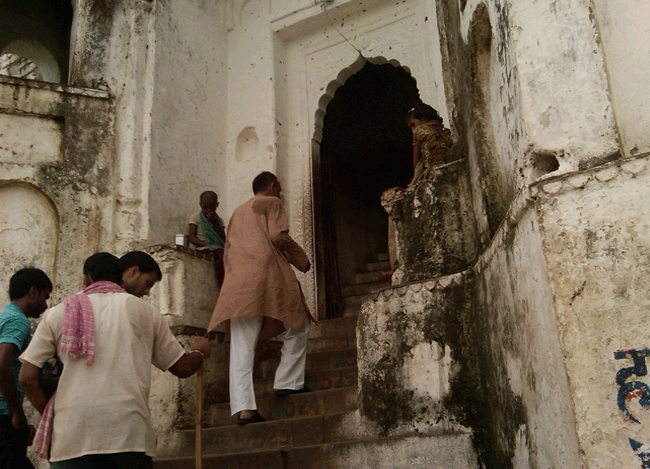
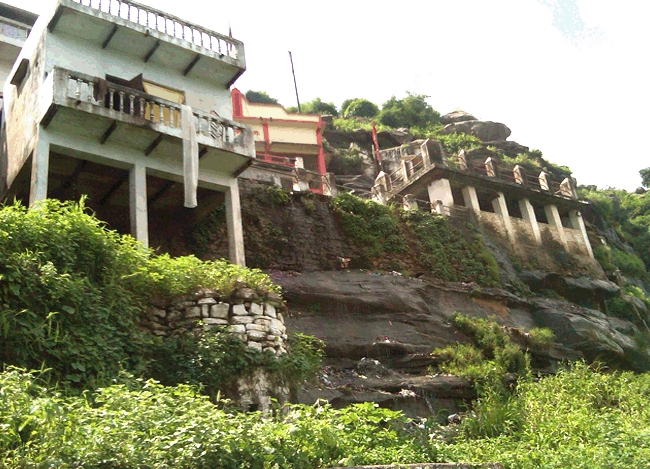


It is believed that even after reducing Ravan’s Lanka to ashes, the fire inside an angry Hanuman remained intact. After the war ended, Hanuman requested Ram to help douse the fire inside his body. It is then that Ram shot an arrow and a fountain sprung from the mountain. Since then this place has come to be known as Hanuman Dhara. This flowing water disappears after falling on Hanuman’s statue from the pipe. Here Shri Anjaneya is in 'Virat swaroopa' having 5 faces.
Every Face of Sri Panchamukha Hanuman has significance -
Sri Hanuman faces east. He grants purity of mind and success.
The Narasimha faces south. He grants victory and fearlessness.
The west facing Garuda removes black magic and poisons.
The north facing Varaha, showers prosperity, wealth.
The Hayagriva mukha faces the Sky. But since we cannot see it, it is usually tilted and shown above Hanuman's face. Hayagriva gives Knowledge and good children."
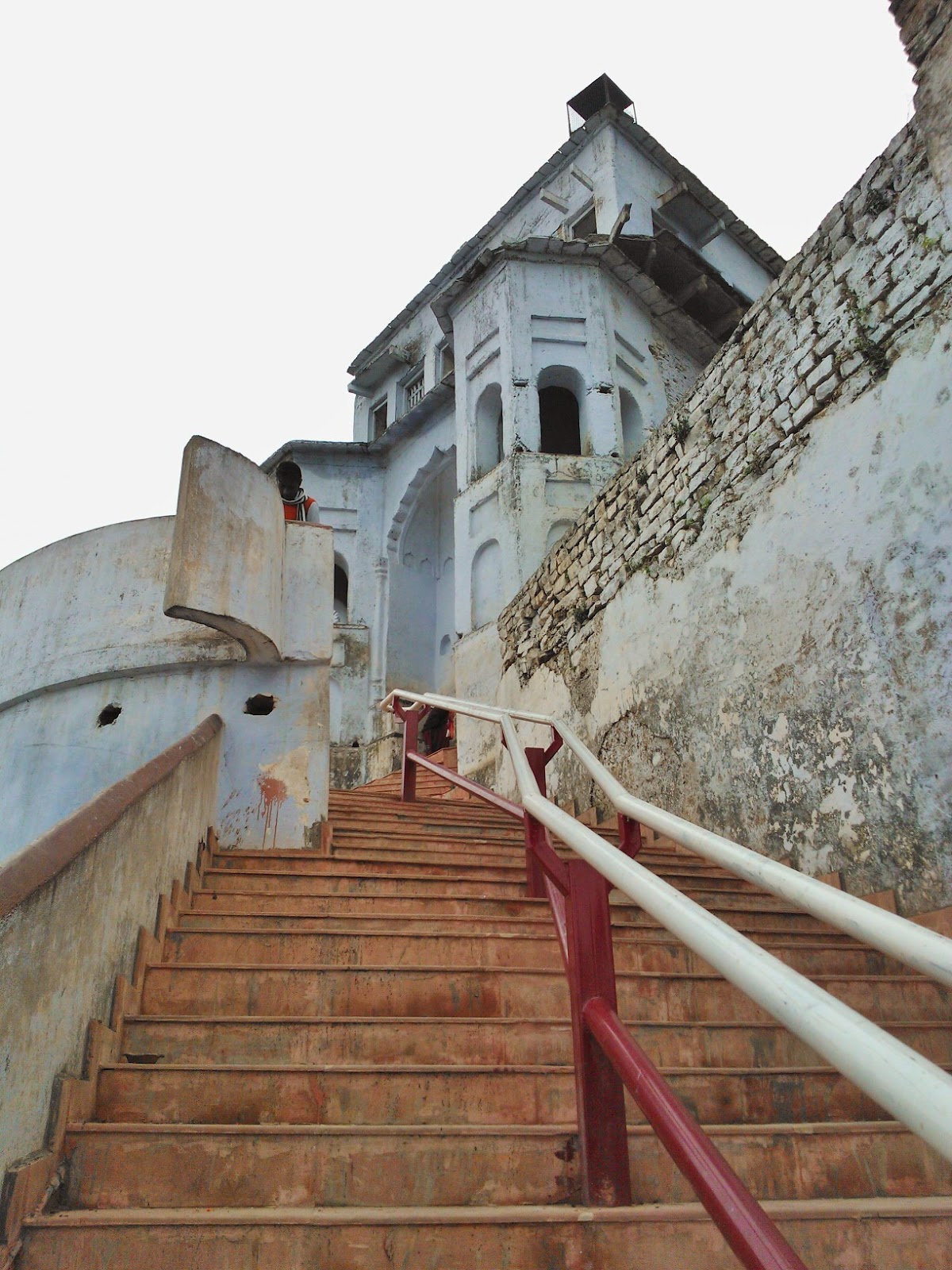


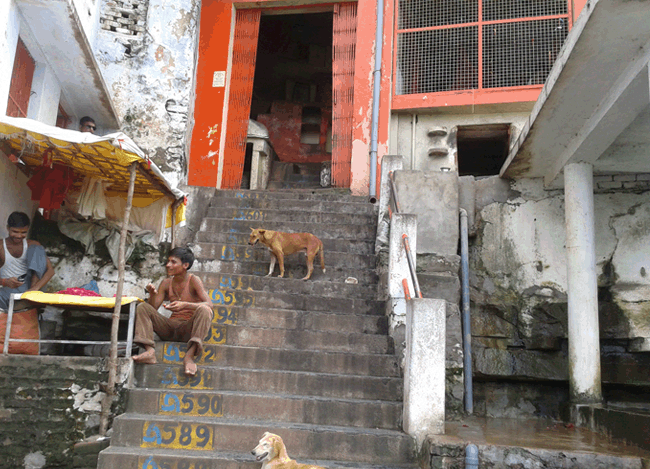
The temple is dedicated to Hanuman holds a deity which is regarded as one of a rare idol of the monkey god. The spring that falls on the deity gradually fills the nearby kund ais indeed a delightful site to be remembered for a long. Apart from this, Hanuman Dhara gives a implausible view of the legendary town of Chitrakoot and so do not forget to pay a visit to this lovely hillock.
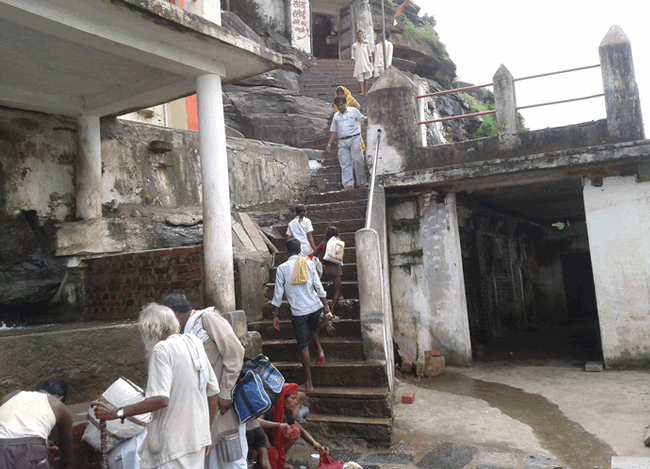



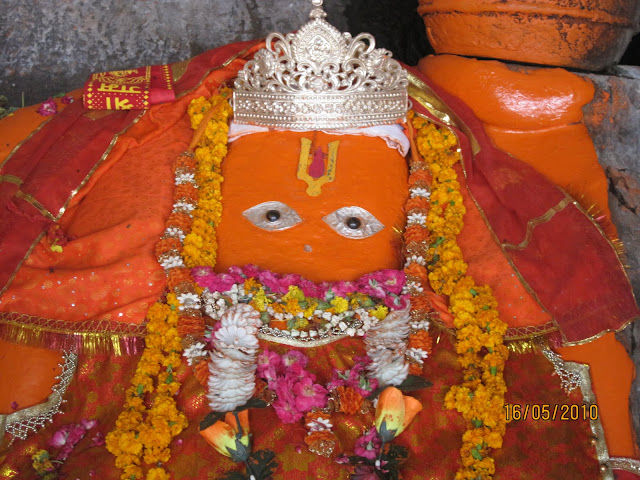

Another story - when Hanuman finished Ayimayi Ravana in patala, that he came here from Naimisharanya to cool down. Various products are offered here to Shri Hanuman - oil, sindoor, janda (flags) as he is 'Veera and Vijaya anjaneya' are some of those. There is still another Anjaneya swami shrine located on top of the hill. Hanuman Dhara Maharaj ki Jai!
Sita Rasoi:
Sita Rasoi (Sita's Kitchen), located further up the hill is a place believed to be a place where Devi Sita cooked food for five maharshis (sages) who were the guests. From here one can have a great view of Chitrakoot village.
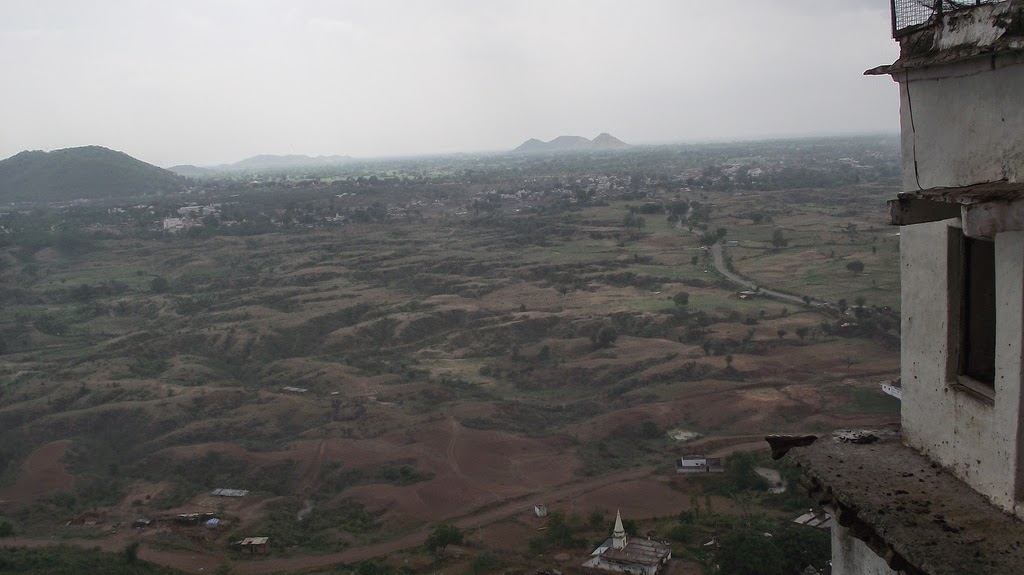
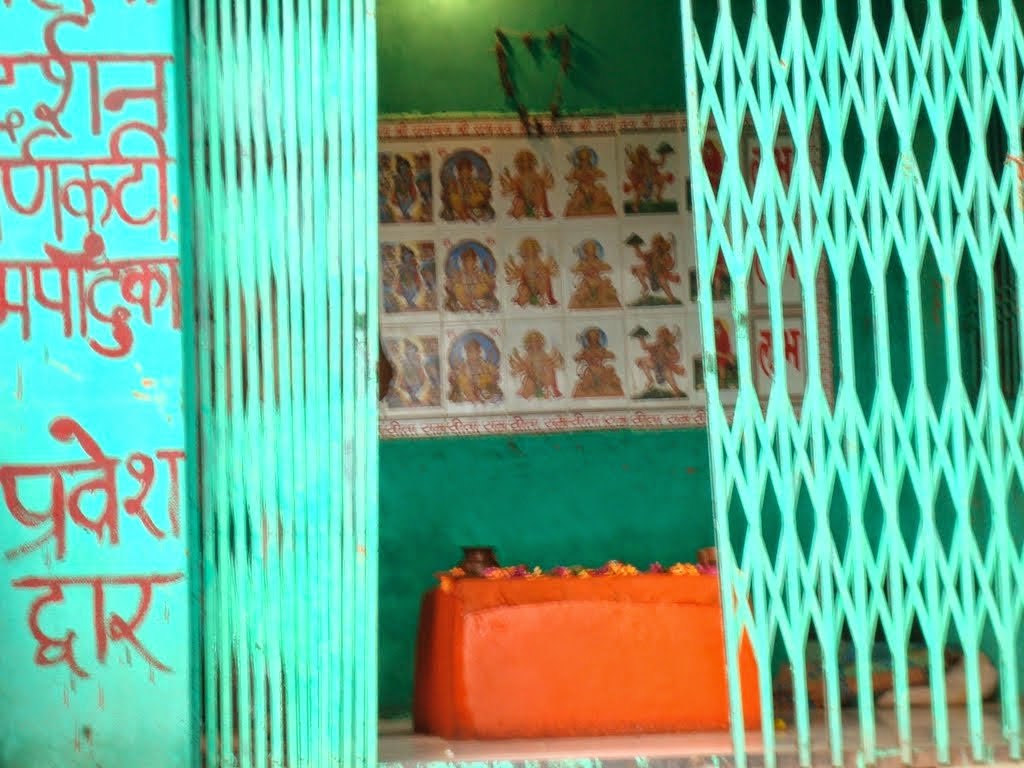
The story of Rama and Sita is the 'Ramayana'. It is also called 'Sita Charitra' (the story of Sita). There is a sloka -
kaavyam raamaayanam kritsnam siitaayaah charitam mahat |
paulastya vadham iti evam chakaara charita vratah
That sage with observed sacred vows has rendered the entire epic in the name of 'Ramayana', 'Sublime Legend of Seetha' (Siithayah Charitam) and 'elimination of Ravana' (Poulastya Vadham).
All alwars and acharyas have given importance to Sita devi. 'Naareena Uttama Vathu:' is the praise given to the leader of all females - Sita. Sita rasoi is located up hill above Hanuman Dhara, the steps are steep but manageable. Here for Rama, Lakshman used to bring roots, tubers, fruits, grains, etc. But on days rishis used to visit - Asti, Agasthyar, Sudeekshana, Sarabhanga, Valmiki, Sita used to cook the food - for 'Athithi Satkara'. There are murthis of Rama, Sita and Lakshmana here - Sita is sitting, Rama and Lakshmana are standing here. (Also there are murthis of the 5 rishis).
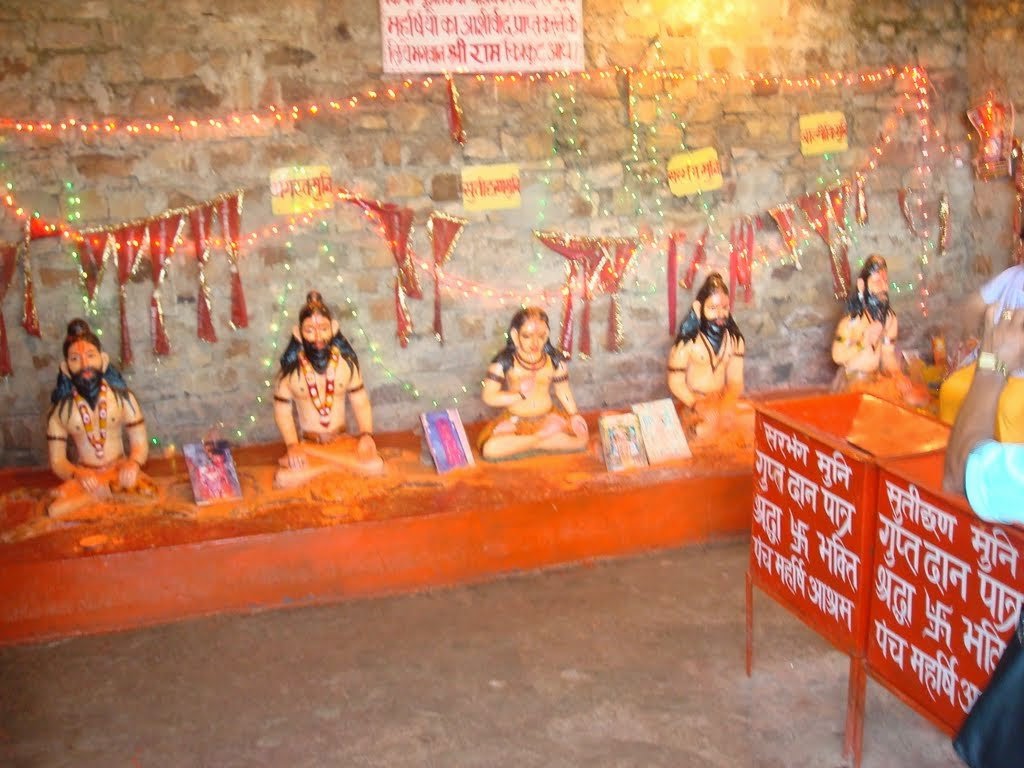



The Sita Rasoi at Chitrakoot is situated about 100 feet from the Hanuman Dhara. Her kitchen tirtha is also known as Pramadgni Asrama. Shaded by several trees, the place where Sita is said to have cooked kandmools (root vegetables) is very beautiful and peaceful. The cylindrical stone shrine sits atop the hill, near another local goddess temple, and adjacent to the Valmiki Asrama. The tirtha name, ‘Sita Rasoi’, is written on a rock outcropping, with a white arrow pointing towards the kitchen.
For Men to attain salvation, he needs to do his Karma Yoga [duties] and also do Thiruvaradhanam and other such Kainkaryams. But a Woman just needs to do her duties of running the family, and just praying Sriman Narayana. This doesn’t mean that a woman is meant just to cook and serve. Anyone can work and earn money, but its only a woman who can bring up good mannered children, keep her husband happy; in short, help others do their Karma Yoga and thereby attain Moksha. Without a woman, a man can’t do his Karma Yoga and so can’t attain Moksham. A woman is an important cog around which the Hindu system of family works. In-fact, the 2 great wars of India, The Ramayana & The Mahabharatha were fought to uphold the dignity of women. Lord Rama fought Ravana for Sita & Krishna himself said that hadn’t it been for Draupadi being humiliated in public, the Mahabaratha war wouldn’t have taken place.
There is also a popular belief that in Hindu culture, a wife should always listen to her husband and never oppose him. This is totally false, Sita devi being a foremost example. When Lord Sri Rama was asked to go to forest for 14 years, he asked Sita to be in the palace [Ayodhya] itself. But Sita devi strongly said that she would come with Him to forest, and added that the place where Lord Rama is would be her Ayodhya. Later when Hanuman meets Sita devi in Lanka, She simply says that “If Sri Ram doesn’t rescue me in 30 days, I will leave this world”. Sita devi didn’t request Ram to rescue her, she [kind of] ordered Him. Lord Sri Ram immediately left to rescue her. Another instance is, when Sugreeva invites Vaali to fight with him, Taarai [wife of Vaali] stops him and warns him not to go. She says that, “when Sugreeva who has been hiding in fear, suddenly invites you for war, there must be some conspiracy. Please don’t go and fight with him.” But Vaali doesn’t pay heed to her words and meets his end. In Mahabharatha, Arjuna says the following to Lord Krishna, “If all the men die in the war, the women might become bad. And if the women turn bad, it’s the end of the world.” This emphasises the importance of Woman in society.
Lord Rama is all set to start from Chitrakoot. We have all the places in Chitrakoot. Rama wanted to start from Chitrakoot since everyone knew that place and his promise to Kaikeyi will not get fulfilled if everyone starts to come to see him. So he wanted to go south towards the forest called Dhandakaranyam. We are now in the final sections of Ayodhya Kandam in Ramayanam. When Rama starts from Chitrakoot towards south on the way to Sharabhanga ashram towards viratha kund, in the outskirts of Chitrakoot is Athri-Anusuiya Ashram. Before the Anusuya ashrama, there is a beautiful temple for Hanuman called 'Das Hanuman' temple.




0 comments:
Post a Comment